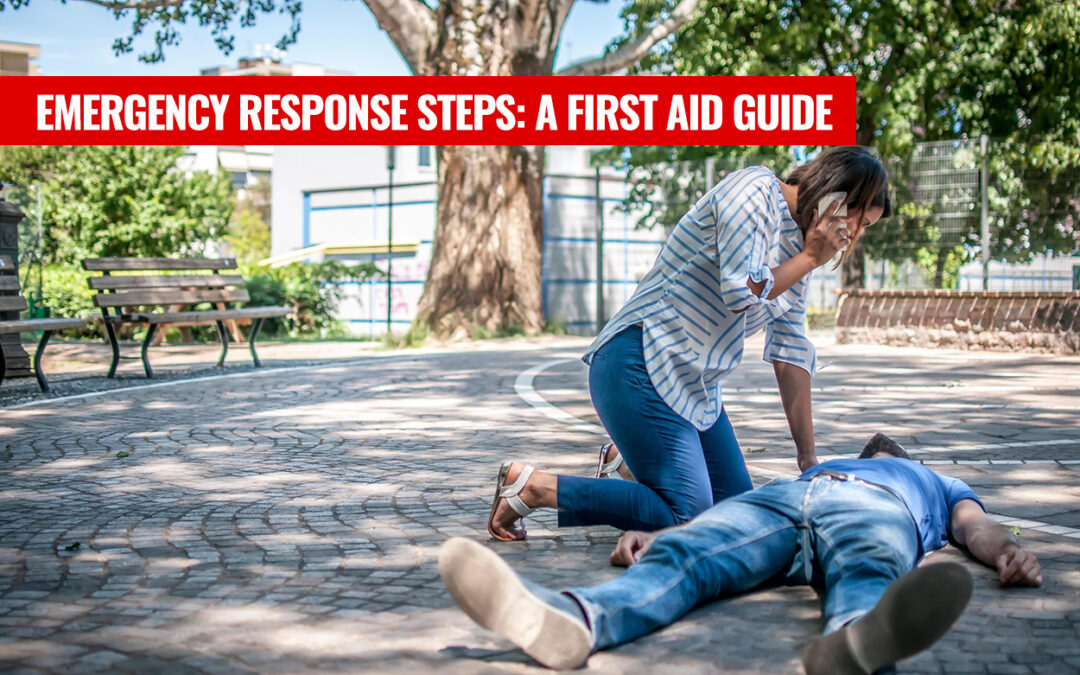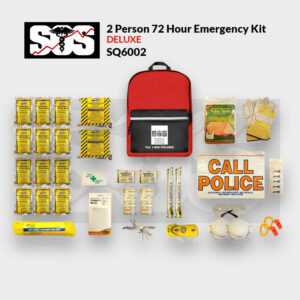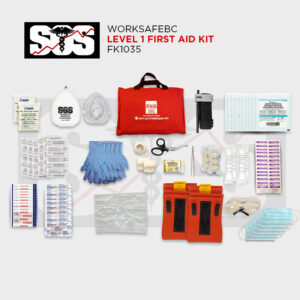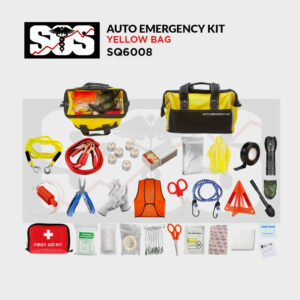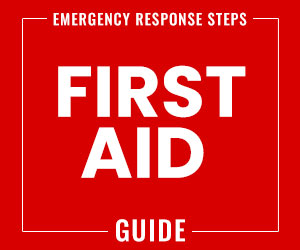 Emergency Response Steps: A First Aid Guide
Emergency Response Steps: A First Aid Guide
When faced with an emergency, it is crucial to stay calm and follow a systematic approach to ensure the safety and well-being of both the rescuer and the patient. Here’s a step-by-step guide based on the provided flowchart for handling such situations effectively.
This first aid guide is intended solely as a supplemental resource and should not be used as a replacement for formal first aid training. It is designed to provide general information and tips to support—not substitute—the instruction provided by certified first aid instructors.
Protect Yourself Against Hazards
Before you do anything else, make sure the scene is secure. This means checking for any potential dangers such as fire, toxic substances, or traffic. Only proceed when you’re confident there’s no risk to yourself or the patient. Safety is the priority for first aid.Useful Tip:
Always have a pair of sturdy gloves in your first aid kit to protect your hands during a crisis.Do Not Move the Patient
Unless there’s an immediate danger that could cause further harm, do not move the person. Unnecessary movement can exacerbate injuries, particularly if there’s a possibility of a spinal injury.Useful Tip:
If you must move someone, keep their back and neck as straight as possible to prevent spinal injuries.Assessing Responsiveness
Approach the patient and tap on each shoulder while clapping by each of their ears, this can help you ascertain their level of consciousness. Introduce yourself to make the person aware of your presence and to avoid startling them.Useful Tip:
If they’re not responding to voice, try tapping their foot—sometimes it can elicit a response when a shoulder tap doesn’t.First Aid for the Unresponsive
If the patient is unresponsive, you need to check their airway, breathing, and circulation – often referred to as the ABCs.
Airway:
Open their airway by placing your hand on their chin and another on their forehead. Gently tilt the head back and lift the chin to open the airway.
Useful Tip:
Clear any visible obstructions in the mouth before attempting to open the airway.
Breathing:
Check for breathing by looking at the chest, listening for breath sounds, and feeling for air movement for no more than 5 to 10 seconds. If they are not breathing normally, prepare to start CPR.
Useful Tip:
Put your cheek near the person’s nose and mouth to feel for breath on your skin.
Circulation:
Look at the patient’s skin color. If it is blue or grey, or the skin is cool or cold, this could indicate poor circulation and the need for immediate medical attention.
Useful Tip:
Press on their nail bed or lip for a quick circulation check—if the color doesn’t return quickly, circulation may be compromised
First Aid Emergency Procedures
At this point, if there is no breathing or circulation, call 9-1-1 immediately and send someone to get an oxygen kit and AED if available. Begin CPR with 30 compressions followed by two breaths, using a one-way valve mask if provided, to prevent disease transmission.
Useful Tip:
Push hard and fast on the center of the chest, to the beat of the classic song “Stayin’ Alive” by the Bee Gees.
First Aid for the Responsive
If the patient is responsive but still requires help:
- Offer oxygen if you’re trained to do so and if it’s available.
- Call 9-1-1 regardless of the person’s protests; it’s better to be safe than sorry.
- Have them rest in a comfortable position, avoiding any unnecessary movement, especially if you suspect any injuries.
Useful Tip:
Use items like jackets or backpacks to prop up limbs or support an injury while you wait for help.
Comfort and Reassure
Whether the patient is responsive or not, it is important to comfort and reassure them. Offer blankets or pillows for comfort, and cover them with extra jackets if needed. This not only provides warmth but also offers a sense of security.Useful Tip:
Speaking in a gentle, calm voice can help keep the patient—and you—calm in the face of an emergency.By following these steps with confidence and care, you can provide efficient and life-saving first aid. Remember, your role as a first aider is to stabilize the patient until professional medical help arrives. Always stay updated with the latest first aid practices and renew your training regularly. Your knowledge and actions can make the difference in an emergency.
While we have made every effort to ensure the accuracy and usefulness of the information, first aid practices can change based on new research, and differences in situations or environments can require specific approaches not covered in this guide.
Our SOS Emergency Response Technologies First Aid Certification programs provide the necessary hands-on practice and up-to-date techniques to respond effectively to a variety of emergencies.
Our SOS OHS Training Programs:
Remember, in an actual emergency, always contact emergency services immediately. The content provided here is for informational purposes only and is not intended for use in critical situations where professional advice and support are imperative.
Other resources can be found at: The Canadian Red Cross
Visit our YouTube channel for helpful First Aid training tips: SOS Emergency Response on YouTube

